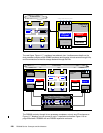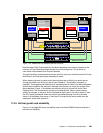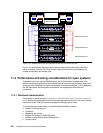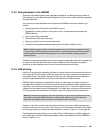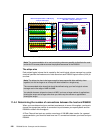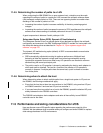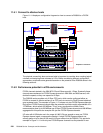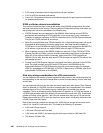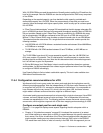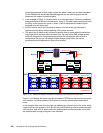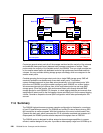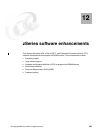236 DS6000 Series: Concepts and Architecture
0.2% cache to backstore ratio for high performance open systems
0.2% for z/OS for standard performance
A ratio of 0.1% between cache size and backstore capacity for open system environments
for standard performance
S/390 or zSeries channel consolidation
The number of channels plays a role as well when sizing DS6000 configurations and when
we know from where we are coming. The total number of channels that were used where you
are coming from has to be considered in the following way:
ESCON channels are not supported for the DS6000. When coming from an ESCON
environment and switching to FICON channels, a four to one ratio is very conservative.
Consider, for example, replacing 16 ESCON channels with four FICON Express channels.
Plan for four FICON channels as a minimum.
When the connected host uses FICON channels with 1 Gbps technology and it will stay at
this speed as determined by the host or switch ports, then keep the same number of
FICON ports. So an ESS 800 with eight FICON channels each connected to IBM 9672 G5
or G6 servers, might end up in a single DS6000 also with eight FICON channels.
When migrating not only to the DS6000 models but also from 1 Gbps FICON to FICON
Express channels at 2 Gbps, you can consider consolidating the number of channels to
about 2/3 of the original number of channels. Use at least four FICON channels per
DS6000. (By the way, when we write about FICON channels we mean FICON ports in the
disk storage servers.)
Coming from FICON Express channels, you should then keep a minimum of four FICON
ports. You might consider using 25% fewer FICON ports in the DS6000 than the
aggregated number of FICON 2 Gbps ports from the source environment. For example,
when you consolidate an ESS 800 with 10 FICON 2 Gbps ports to a DS6000, plan for all
eight possible FICON ports on the DS6000.
Disk array sizing considerations for z/OS environments
You can determine the number of ranks required not only based on the needed capacity, but
also depending on the workload characteristics in terms of access density, read to write ratio,
and hit rates.
You can approach this from the disk side and look at some basic disk figures. Fibre Channel
disks, for example, at 10k RPM, provide an average seek time of approximately 5 ms and an
average latency of 3 ms. For transferring only a small block, the transfer time can be
neglected. This is an average 8 ms per random disk I/O operation or 125 I/Os per second. A
15k RPM disk provides about 200 random I/Os per second for small block I/Os. A combined
number of 8 disks is then good for 1,600 I/Os per second when they spin at 15k per minute.
Reduce the number by 12.5% when you assume a spare drive in the 8 pack. Assume further
a RAID-5 logic over the 8 packs.
Back at the host side, consider an example with 4,000 I/Os per second and a read to write
ratio of 3 to 1 and 50% read cache hits. This leads to the following I/O numbers:
3,000 read I/Os per second.
1,500 read I/Os must read from disk.
1,000 writes with RAID-5, and assuming the worst case, results in 4,000 disk I/Os.
This totals 4,500 disk I/Os.



